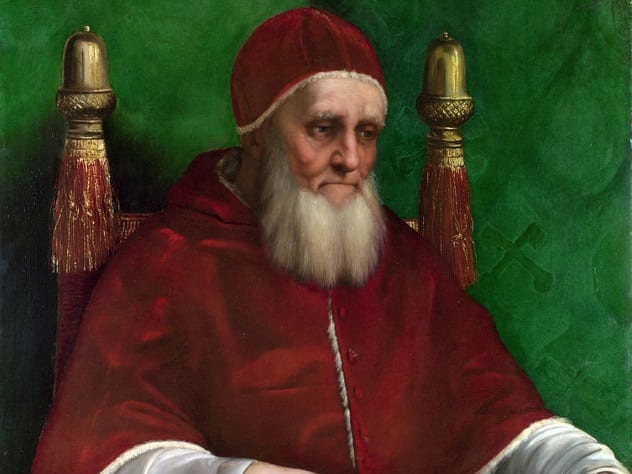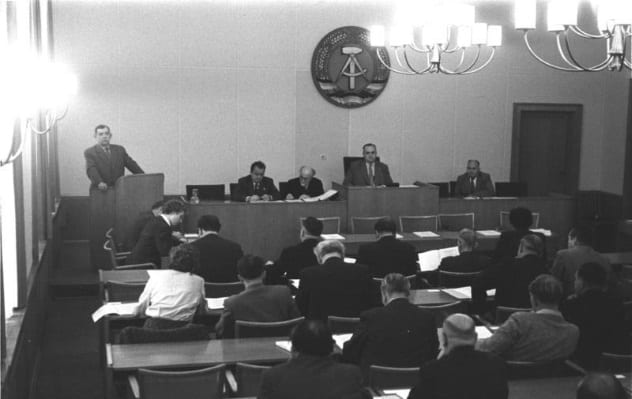Countries that no longer exist
Countries that no longer exist
Countries That No Longer Exist 2022
While it is often tempting for patriotic people to think of their homeland as permanent and everlasting, it is an undeniable fact that sometimes even countries cease to exist.
Why do countries cease to exist?
There are several possible reasons for a nation to come to an end. Some countries merge to form (or reform, in the case of East Germany and West Germany) a single country. Other countries split apart—for example, the Union of Soviet Socialist Republics (U.S.S.R.), dissolved into 15 smaller countries in the late 1980s and early 1990s. Some countries have been annexed, such as when the growing United States of America absorbed the fledgeling Republic of Texas in 1845. Others have been conquered outright and assimilated, as happened when Vietnam absorbed the kingdom of Champa. Finally (and least catastrophically), some nations have remained intact and simply adopted a new name, such as when Ceylon «died» and was reborn as Sri Lanka in 1972.
List of the most well-known nations that have ceased to exist throughout history:
Events influencing the fall and rise of countries over the past century
World War I and World War II saw immense disruption to the alignment and existence of many countries throughout the world. Alsace-Lorraine, the region that straddles France and Germany, ceased to exist in 1918 with the end of World War I. The Weimar Republic became Nazi Germany, both of which no longer exist and are parts of the modern country of Germany.
The slow-motion collapse of the Soviet Union from 1988-1992 led to the introduction of 15 separate countries in Europe and Asia. Czechoslovakia and Yugoslavia, two countries that emerged out of World War I and World War II and which had strong ties to the U.S.S.R., dissolved alongside it. Czechoslovakia became the Czech Republic and Slovakia, and Yugoslavia broke apart to form Bosnia and Herzegovina, Montenegro, Macedonia, Slovenia, Serbia, and Kosovo (which is was struggling to attain independence from Serbia in 2021).
In the Middle East, The United Arab Republic was formed in 1958 by merging Egypt and Syria; the UAR then attempted to add a third country, then called North Yemen, and become the United Arab States. Both the UAR and UAS dissolved in 1961.
Some view the Native Americans and First Nations as having historical sovereign states, as they once had their own governments and tribal alliances, but are now part of modern countries such as the United States, Canada, and Mexico. There is significant contention around this idea, as the US Constitution allows for autonomy of the native tribes, but this autonomy is often poorly respected or simply ignored.
9 countries that ceased to exist in the 20th century
Twitter LinkedIn icon The word «in».
LinkedIn Fliboard icon A stylized letter F.
Flipboard Facebook Icon The letter F.
Email Link icon An image of a chain link. It symobilizes a website link url.
Whether they lost wars, were adopted by other countries, or simply got forgotten, here are nine countries that ceased to exist in the 20th century.
Neutral Moresnet, 1816 to 1920
This small piece of land, less than 1.5 square miles that used to be wedged between present-day Germany and Belgium, fell through the cracks when Europe’s borders were redrawn, and became a «co-dominium,» meaning that Belgium and what was then Prussia shared custody of it: Both had their eye on a profitable zinc mine.
The tiny territory was Dutch-Prussian prior to Belgium’s 1830 independence, briefly German when annexed during World War I, and finally formally annexed by Belgium in 1920. Today, it essentially amounts to the Belgian city of Kelmis.
Republic of Salò, 1943 to 1945
Also known as the Italian Social Republic, Salò was essentially a Nazi satellite state in Italy and run by Mussolini. Or rather «run» by Mussolini, as it was really only officially recognized by Germany, Japan, and the rest of the Axis powers, and depended heavily on German troops to maintain control. While it claimed Rome as its capital and northern Italy as its territory, it really centered on the small town of Salò, which is near Lake Garda and east of Milan. The rickety regime came to an end in 1945 — on what’s now known as Liberation Day — when, thanks to the Allied forces, every last German was removed from the country.
Tibet, 1912 to 1951
United Arab Republic, 1958 to 1971
Mostly a political union between Egypt and Syria that hoped to thwart Israel, among other things, the UAR didn’t last long, as Syria seceded from the republic after only three years. (The fact that Egypt and Syria don’t even share a border didn’t help with cohesion.) While Egypt continued to be known as the United Arab Republic for another decade, it was dissolved in 1971.
Sikkim, 1642 to 1975
Ceylon, 1505 to 1972
In 1972, it changed its name to Sri Lanka.
Czechoslovakia, 1918 to 1993
Once a sovereign state in central Europe (surrounded by Austria, Germany, Poland, Ukraine, and Hungary) that declared its independence from the defunct Austro-Hungarian Empire, what was Czechoslovakia peacefully split into two countries — the Czech Republic and Slovakia — in 1993.
After the Austro-Hungarian collapse in 1918, Czechoslovakia was created by combining Austro-Hungarian leftovers — mostly Czech and Slovak lands. It was one of the more prosperous European countries, as well as one of the few with a peaceful, functioning democracy — at least until WWII, when it became occupied by Germany. It was then occupied by the Soviets until that nation disappeared, too. Czechoslovakia thrived once more, but since the Czechs and Slovaks had separate histories, cultures, and values, their split was somewhat inevitable.
Countries That No Longer Exist
Brendan Smialowski/Getty Images
As countries merge, split, or change their names, the list of countries that no longer exist has grown. The list below is far from comprehensive, but it includes the most notable former countries.
Abyssinia
Also known as the Ethiopian Empire, Abyssinia was a kingdom in northeast Africa. In the early 20th century, it split into the states of Eritrea and Ethiopia.
Austria-Hungary
A monarchy established in 1867, Austria-Hungary (also known as the Austro-Hungarian Empire) included not just Austria and Hungary but also parts of the Czech Republic, Poland, Italy, Romania, and the Balkans. The empire collapsed at the end of World War I.
Bengal
Bengal was an independent kingdom in southern Asia that existed from 1338 to 1539. The area has since been divided into the states of Bangladesh and India.
Burma
Burma officially changed its name to Myanmar in 1989. However, many countries still have not recognized the change.
Catalonia
Catalonia was an autonomous region of Spain. It remained independent from 1932 to 1934 and from 1936 to 1939.
Ceylon
Ceylon was an island country located off the coast of India. In 1972, it changed its name to Sri Lanka.
Corsica
This Mediterranean island was ruled by various nations over the course of its history but had several brief periods of independence. Today, Corsica is a department of France.
Czechoslovakia
Czechoslovakia was a country in eastern Europe. It peacefully split into the Czech Republic and Slovakia in 1993.
East Pakistan
This area was a province of Pakistan from 1947 to 1971. It is now the independent state of Bangladesh.
Gran Colombia
Gran Colombia was a South American country that included what is now Colombia, Panama, Venezuela, and Ecuador from 1819 to 1830. Gran Colombia ceased to exist when Venezuela and Ecuador seceded from the union.
Hawaii
Though a kingdom for hundreds of years, Hawaii wasn’t recognized as an independent country until the 1840s. The country was annexed to the United States in 1898.
New Granada
This South American country was part of Gran Colombia from 1819 to 1830 and was an independent country from 1830 to 1858. In 1858, the country became known as the Grenadine Confederation, then the United States of New Granada in 1861, the United States of Colombia in 1863, and finally, the Republic of Colombia in 1886.
Newfoundland
From 1907 to 1949, Newfoundland existed as the self-governing Dominion of Newfoundland. In 1949, Newfoundland joined Canada as a province.
North Yemen and South Yemen
Yemen split in 1967 into two countries, North Yemen (a.k.a. the Yemen Arab Republic) and South Yemen (a.k.a. the People’s Democratic Republic of Yemen). However, in 1990 the two rejoined to form a unified Yemen.
Ottoman Empire
Also known as the Turkish Empire, this empire began around 1300 and expanded to include parts of contemporary Russia, Turkey, Hungary, the Balkans, northern Africa, and the Middle East. The Ottoman Empire ceased to exist in 1923 when Turkey declared independence from what remained of the empire.
Persia
The Persian Empire extended from the Mediterranean Sea to India. Modern Persia was founded in the 16th century and later became known as Iran.
Prussia
Prussia became a Duchy in 1660 and a kingdom the following century. At its greatest extent, it included the northern two-thirds of modern Germany and western Poland. Prussia, by World War II a federal unit of Germany, was fully dissolved at the end of World War II.
Scotland, Wales, and England
Despite recent advances in autonomy, part of the United Kingdom of Great Britain and Northern Ireland, both Scotland and Wales were independent nations that eventually merged with England to form the United Kingdom.
Sikkim
Sikkim was an independent monarchy from the 17th century until 1975. It is now part of northern India.
South Vietnam
South Vietnam existed from 1954 to 1976 as the anti-communist counterpart to North Vietnam. It is now part of unified Vietnam.
Taiwan
While Taiwan still exists, it is not always considered an independent country. However, it did represent China in the United Nations until 1971.
Texas
The Republic of Texas gained independence from Mexico in 1836. It existed as an independent country until it was annexed to the United States in 1845.
Tibet
Union of Soviet Socialist Republics (USSR)
For decades, this country was the most powerful communist nation in the world. In 1991, it broke into 15 new countries: Armenia, Azerbaijan, Belarus, Estonia, Georgia, Kazakhstan, Kyrgyzstan, Latvia, Lithuania, Moldovia, Russia, Tajikistan, Turkmenistan, Ukraine, and Uzbekistan.
United Arab Republic
In 1958, non-neighbors Syria and Egypt joined together to form the United Arab Republic. In 1961, Syria abandoned the alliance, but Egypt kept the name United Arab Republic for itself for another decade.
10 European Countries That No Longer Exist
The 19th and 20th centuries were a period of unprecedented change in human history. In 1807, the Napoleonic Wars were raging; in 2007, smartphones were becoming a thing. No other era in human history comes close to matching this rate of change.
And in no other place was this change faster than in Europe. As technology evolved, the borders of nations shifted, and entire states rose and fell. The 20th century in particular saw the shattering of ancient kingdoms and the birth of many new states, some of which failed to make it to the modern day. Ideologies led to new experiments and disastrous wars, and the human race saw the highest sustained period of migration in history. Not all the countries which entered this crucible made it out the other side. In this list, we’re taking a look at ten European countries that collapsed during this formative time.
10 Austria-Hungary
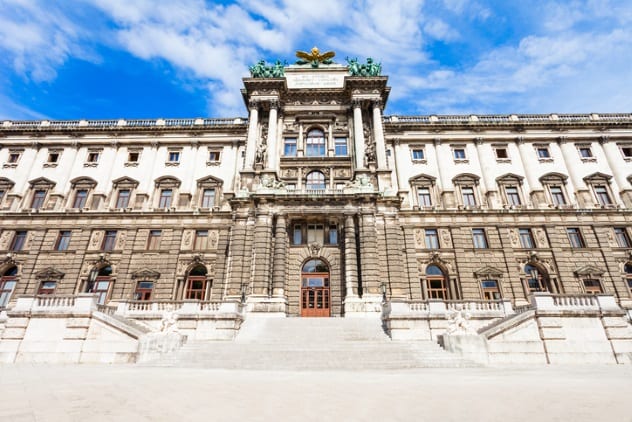
The Hapsburg monarchs had ruled Austria and Hungary since the 1500s. The two countries were governed in a similar way to England and Scotland before the Act of Union: While they shared a monarch, they remained independent of each other, with their own parliaments, budgets, and laws. [1]
This system was shaken by the fall of the Holy Roman Empire in 1806, when the Hapsburgs joined the countries together in the Austrian Empire. While Hungary was still nominally independent and still had its own parliament, it was now part of a larger state. This arrangement hardly suited the Hungarians, who agitated for reform several times over the course of the 19th century. One reformer, Istvan Szechenyi, shocked all when he addressed the Hungarian Diet in Hungarian for the first time in 1825, before proceeding to lay out a program of reform abolishing serfdom, introducing wage labor, and founding a national bank. His plans were ignored, but the Hapsburgs were rattled.
The empire expanded over the course of the 19th century, and by 1900, it controlled dozens of different ethnic groups, from Serbs in the south to Czechs in the north and many in between. In an era of rising nationalism, the government struggled to hold the empire together, despite its powerful army and huge industrial development. (At its height, the Austrian Empire had the fourth most developed industry in the world.)
Following the devastating Austro-Prussian War, the Hapsburgs reformed the country and renamed it Austria-Hungary, granting Hungary more powers in an attempt to appease the separatists. It did little to stifle the resistance. By the outbreak of World War I, Archduke Franz Ferdinand had developed a plan to radically reform the country into the United States of Greater Austria, where the country would be broken into 13 semiautonomous states roughly following cultural boundaries. Unfortunately, the archduke was assassinated before his plans came to fruition. Following Austria-Hungary’s role in World War I, it was dismantled by the Allies and broken into several smaller successor states.
9 Czechoslovakia
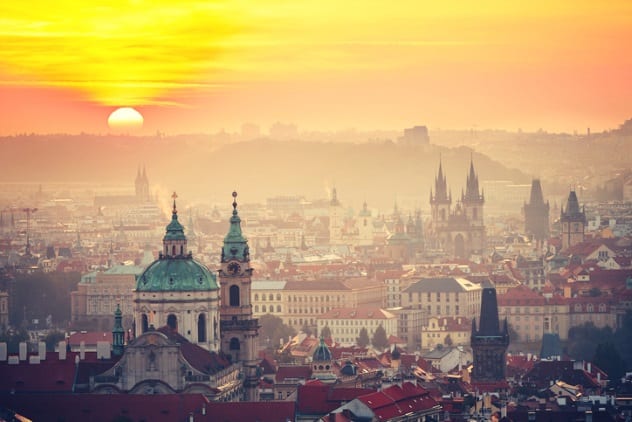
In many ways, Czechoslovakia was a country born out of necessity. The archduke of Austria took the Bohemian crown in 1526, and from then on, the Czech lands were a client kingdom of the Austrian monarchy. On the other side, Slovakia was conquered by the invading Hungarians around the year 1000, becoming a part of the Kingdom of Hungary. With the formation of Austria-Hungary, they were brought together in one country. The Czech lands contained over half of the industrial development of all Austria-Hungary, and this, alongside the forced Magyarization of the Slovaks, led to people in both places agitating for independence. [2]
These efforts were successful in 1918, when World War I came to an end. The Allies recognized their independence, and Czechoslovakia was born. The new country was widely successful, and at its height, it was the tenth most industrialized country on Earth. However, border tensions with Austria and Hungary remained unresolved, and the country was occupied and significantly reduced by the Nazis during World War II.
Following the war, aspirations for the country to be a bridge between East and West came to a bitter end with the communist coup of 1948. From then until 1990, the country was a satellite of the USSR, and communist ideology was implemented. Opposition to and deviation from Soviet control led to a government purge in 1952 and a clear break with Soviet policy in the Prague Spring of 1968, in which the Soviet military was forced to intervene. Further resistance came to a head in the Velvet Revolution of 1989, which forced the collapse of the communist government. For the first time since 1938, Czechoslovakia was once again an independent country.
It wasn’t to last. Rising tensions between nationalists on both sides of the country drove a wedge through the government. In particular, many Slovaks thought the country was too heavily dominated by the Czechs, who made up over two thirds of the population and who held the national capital. On the other side, some Czechs in the government considered the poorer region of Slovakia a drain on the country’s resources. The prime ministers of both agreed to the country’s peaceful partition in 1992.
8 The Papal States
Starting in the 700s and continuing for over 1,000 years, the Pope exerted secular as well as religious influence over the people of Europe, particularly in Italy. For those who lived in the Papal States, whatever their religion, the Pope was their secular lord. However, the Pope’s actual influence was minimal, and the states were largely under the control of independent princes with their own territories. For the most part, the Papal States existed as a mechanism for protecting the Pope. [3]
The Papal States really began to grow in influence during the Renaissance, particularly after the reign of Pope Julius II, who was nicknamed the Warrior Pope, from 1503 to 1513. In the 1800s, the Papal States became an increasingly old-fashioned and backward nation, refusing to acquiesce to many of the liberal and social reforms that swept Europe at the time. By 1870, the Papal States were the only country in Europe still continuing the practice of making young boys castrati, by castrating them before puberty so that they would retain their tenor singing voices.
Italian nationalism grew in the years after the Napoleonic Wars, and by the 1860s, few Italians opposed the Kingdom of Sardinia when it went on a military campaign to unite the peninsula. The newly formed Kingdom of Italy declared Rome its capital in 1861, but a French garrison protecting the city prevented them from conquering it. This garrison was recalled at the start of the Franco-Prussian War, and the city was conquered in 1870. Rather than surrender, though, the papacy insulated itself within the Vatican, and successive Italian leaders refused to conquer it. The standoff was finally resolved in the Lateran Treaty of 1929, in which the Papal States were formally abolished, and Italy recognized the Vatican City State.
7 East Germany
Following World War II, the UK, US, and USSR agreed to divide Germany and Berlin between them. Initially, this meant that Germany was divided into Soviet, US, UK, and French zones, but the British and American zones were merged in 1947. The French agreed to let their zone join the British and American zones in 1949, and the Federal Republic of Germany was formed. [4]
Later that year, the Soviets ceded control of their zone to the German communist party, the SED. The Democratic Republic of Germany (known to the West as East Germany) was born. In the early days, the ruling German communist party often went against policy decided in Moscow. This sparked concern among Soviet leaders, so the party’s more moderate members were purged. From then on, the SED was a thoroughly communist party—sometimes even exceeding the government in Moscow. Strikingly, the SED refused to accept the liberalization policies of Gorbachev in the 1980s, sticking to an orthodox Marxist line right until the end.
Society in East Germany was highly controlled. The SED enforced strict censorship, and Marxism-Leninism was compulsory learning in schools. Though unemployment and homelessness were low, and state-funded benefits such as entertainment and health care were very affordable, if not outright free, the restrictions on everyday liberty and low income disparity led to many well-educated people—particularly university graduates—fleeing to the West. This “brain drain” became so acute that it was one of the main contributors to the construction of the Berlin Wall, and the East German border was heavily policed.
East Germany remained cut off from the West for nearly 30 years before popular resistance forced the communist government to allow an election. The first truly free elections in East Germany since 1932 took place in 1990, in which the pro-reunification Christian Democratic Union led a victorious coalition. The country officially dissolved itself and joined the Federal Republic of Germany shortly after, bringing East Germany to an end.
6 Yugoslavia
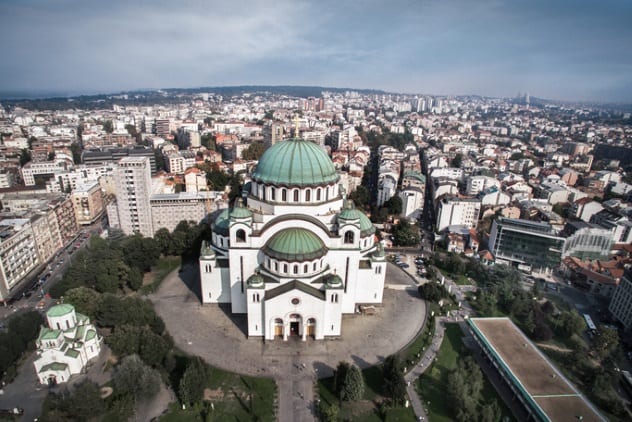
Though the concept of a united southern Slavic nation had existed since at least the 1600s, it was little more than a dream by the time it was suddenly created in the aftermath of World War I. Prior to the war, the nations of Yugoslavia had belonged to two old, powerful empires: Austria-Hungary and the Ottoman Empire. Following the Treaty of Versailles, both of these empires were broken up, and the southern Slavs (consisting of more than 20 ethnic groups) were pushed together in a single state. [5]
From the offset, the so-called “Versailles State” strained under the weight of nationalist tensions. Following political disorder, King Alexander seized power from the government in 1928 and pushed through a series of reforms aimed at uniting the country, including splitting the country into new provinces not based on historical borders and banning the use of non-Yugoslavian flags. The measures were widely unpopular, and Alexander was assassinated in 1934.
The country was thereafter dominated by Tito and his Partisans, who took the reins of power. In 1948, Yugoslavia officially broke its connections with Moscow. It became a core founder of the Non-Aligned Movement, which sought to oppose both the communist East and US-led West. Tito granted the nations of Yugoslavia many freedoms, including their own supreme courts, parliaments, and leaders, in an effort to prevent nationalist tensions.
Tito held the country together through reputation and will, and with his death, the country began to unravel. A number of issues, including the potential for Serbian dominance, the ethnic makeup of Kosovo, and the status of minority ethnics living in different states, led to irreconcilable differences between Yugoslavia’s devolved governments. These came to a head shortly after the fall of the Soviet Union, when the dominant communist party broke up. With the sudden lack of a federal government, these burning issues boiled over into outright conflict, leading to the brutal Yugoslav Wars.
5 The Ottoman Empire
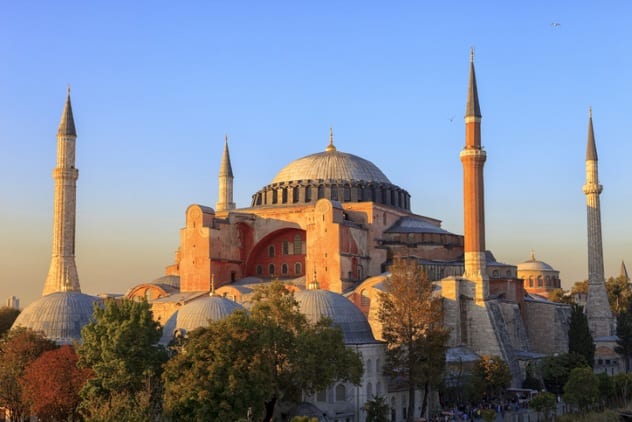
The Ottoman Empire was one of the longest-lived empires in human history. [6] First formed by seminomadic Turks in the 1300s, it dominated the Middle East, North Africa, and Southeastern Europe throughout the 1600s and 1700s. Its armies even reached the gates of Vienna in Austria. By the dawn of the 20th century, however, it was overextended, outdated, and struggling to control its hundreds of ethnic groups in an age of rising individual education and national identity.
The empire had been struggling to keep up with the other great powers of the globe since the 1800s but had been able to rely on its powerful alliances to maintain its position. In particular, the empire was able to defeat Russia in the Crimean War during the 1850s because of support from France and Britain. By 1900, however, the country was diplomatically isolated and very vulnerable. It looked toward the new state of Germany, very powerful but similarly isolated, as a way of forming a new bloc that could resist the Triple Entente. This bloc became known as the Central Powers.
Unfortunately, these two major factions found themselves at war in 1914, and by 1918, the Ottomans knew they were on the losing side. The empire was also struggling with rebellions and resistance in Arabia and had resorted to ethnically cleansing its Armenian and Greek regions to suppress resistance. Just as recently as 1909, the country had gone through a significant democratic reform that looked as though it would rejuvenate the state. By 1918, it was all but finished. The Allies officially partitioned the empire following World War I, leaving the empire with a much-reduced territory centered around modern-day Turkey. The death blow came from within Turkey itself, as the Young Turk movement pushed the sultanate out and declared Turkey a secular republic.
4 The USSR
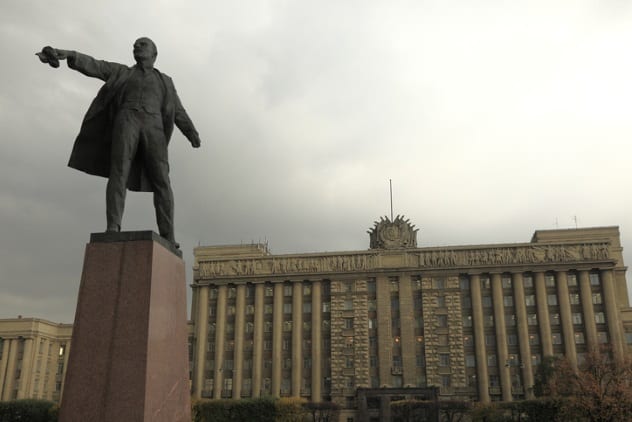
In 1917, frustrated with the state of Russia and the slow pace of reform, a band of rebels set out to reshape the country. These were the Bolsheviks. Following an internal power struggle, they had taken control of Russia. Their influence extended to the surrounding states by 1922, and the Soviet Union was born. [7] Founded as a communist state, the new government’s goal was to implement true equality for every man or woman, regardless of birth.
This dream began to founder shortly after its beginning with the death of its first leader, Vladimir Lenin, in 1924. Josef Stalin inherited the state. He was a man who many, Lenin included, considered to be dangerous both to communism and the USSR. Over the next three decades, fantastic achievements in industrialization, technology, and national identity were overshadowed by political crackdowns, extreme authoritarian control, and economic and organizational problems that ultimately led to a famine which killed millions of people. Stalin’s extreme interpretation of Marxism led to the birth of a state which could rightfully be considered one of the most influential, and controversial, in human history.
The era following Stalin’s rule was arguably the USSR’s most successful, a time when its technological achievements (particularly in the Space Race) reached their heights and when the country was shaking off its previous political restrictions and becoming more open to the world. Quality of life improved and led to something of a golden age which is viewed with nostalgia by some Russians today. This wasn’t to last, however, and the Union entered a period of stagnation in the years after Khrushchev’s departure in 1964. Facilitated by a growing desire for liberty among its people and accelerated by the USSR’s failure to keep up with the West economically, increasingly widespread political and economic crises led to the decision to partially liberalize the state. By 1991, however, the situation was no better, and one by one, all of its members declared independence.
3 Prussia
Prussia had its roots in the religious state established by the Teutonic Order in 1308. [8] Following their conquest of the pagans who inhabited Prussia, this new German state attracted many Polish and German immigrants—so many, in fact, that they had all but displaced the original Old Prussians within a few decades. The Teutonic Order ultimately collapsed, and Prussia was absorbed by Poland around 1410.
The region remained dominated by German settlers, however, and it was eventually inherited by the leader of Brandenburg, Frederick I. While he was still technically a Polish vassal in Prussia and a German vassal in Brandenburg, Frederick began building his own state out of his possessions, including his own bureaucracy. Crucially, he established a powerful and very disciplined army, which Prussia later became famous for. Following the Thirty Years’ War, Prussia and Brandenburg became an independent state in 1657. From then on, it was one of the great powers of Europe, if not the world, victorious in wars throughout the 1700s and going on to decide the results of the Napoleonic Wars, the Austro-Prussian War, and the Franco-Prussian War, each of which shaped the borders and history of continental Europe. Prussia reached the height of its power in the wake of the Franco-Prussian War. It used its influence to form first the North German Confederation and then the German Empire in 1871. It was the largest state in the new country, covering around half of Germany’s total area.
Prussia was always heavily conservative, but it became a bastion of democracy and left-wing thinking after Kaiser Wilhelm abdicated in 1918. Fears that the Prussian state could be used to launch a communist uprising led Chancellor Von Papen, under the influence of Hitler, to launch a coup, expelling the Prussian government and seizing it for the Reich. Hitler’s eventual rise to power six months later was made much easier by his possession of Prussian resources. Following World War II, Prussia was abolished for good in 1947 as one of the Allies’ war demands.
2 The Kingdom Of The Two Sicilies
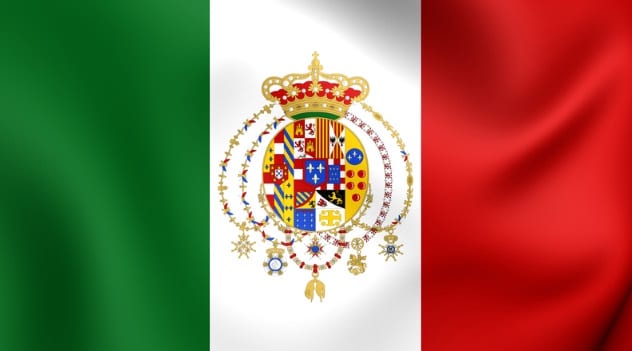
The Kingdom of the Two Sicilies existed in various forms from the Early Middle Ages to 1860, sometimes as one kingdom, sometimes as two—Sicily and Naples. [9] For most of its history, it was tied to the royal families of Spain and Aragon, who often gave the kingdom to their heirs or close relatives. The two kingdoms of Sicily and Naples were officially united in 1816 as the Kingdom of the Two Sicilies under Ferdinand I, after a brief time as the Parthenopaean Republic under Napoleon.
For the majority of its existence, the Two Sicilies was a heavily agricultural country in which the Church had an enormous amount of influence—owning up to half of the country’s total land. The country did have a burgeoning industrial sector, however, particularly in the areas of arms manufacturing and processed foods. When the Italian Unification came, it hit Two Sicilies hard: The combination of northern migration and neglect by the new government led to the widespread collapse of industrial development.
1 The United States Of The Ionian Islands
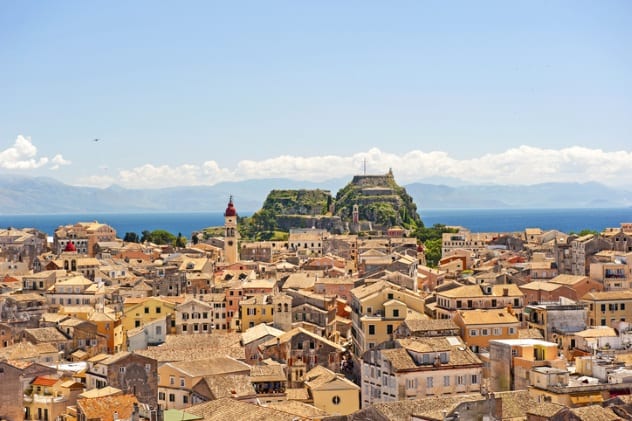
The United States of the Ionian Islands was a tiny country compared with the others on this list, but it was important in the history of Greece because it was, when it was created in 1815, the first time any Greeks had governed themselves in 400 years. [10]
The independence of the Ionian Isles stretched back to 1800, when the semi-independent Septinsular Republic was created under the governance of Russia and the Ottoman Empire. The islands were seized by the French in 1807 and then made a protectorate of Britain in 1815 at the conclusion of the Napoleonic Wars. While the islands were technically a satellite of the United Kingdom, they were self-governing and had their own senate. The senate was made up of elected representatives from each of the seven islands of the republic. With support from the British government, the islands’ infrastructure developed quickly, with new road links being built alongside new power plants, a palace, an aqueduct, and a university—most of which were dismantled or fell into disrepair when the islands merged with Greece.
Despite an anti-British riot which gripped the country during the year of European unrest in 1848, relations between the Ionian Isles and Britain were largely positive. With the crowning of a new Greek king in 1864, the British were keen to bolster his reign and ceded the islands to him, bringing the republic’s history to an end.
12 Once Prominent Countries that No Longer Exist
Throughout history, there have been numerous cases of countries falling apart. In fact, it probably occurs far more frequently than most people realize. We saw it happen often in the 20th century, and it continues to happen today. It would be impossible to name all the prominent countries that no longer exist, but we’ve tried to highlight some of the more recent ones in the list below. These countries managed to make a mark in their time, but are no longer around today.
Countries that No Longer Exist
1. The Soviet Union
The Soviet Union is perhaps the most prominent recent example of a major country falling apart, being the one superpower aside from the United States during the Cold War era. The empire consisted of 15 different Eurasian nations at its peak. Upon its collapse in 1991, the bulk of these nation states ended up becoming their own sovereign countries.
2. United Arab Republic
This country was more of an alliance in practice, with Egypt and Syria merging in 1958, despite the fact that they don’t actually share a border. This union was short lived, however, with Syria backing out after only 3 years. Egypt would keep the name for another decade until it was formally dissolved in 1971.
3. Czechoslovakia
Czecholslovakia was one of the many different countries that sprouted out of the end of World War I, a combination of Bohemia, Moravia and Slovakia. During World War II, it fell under Nazi rule, and became a part of the Communist Eastern Bloc during the Cold War. Following the “Velvet Revolution,” Communist rule came to an end, and in 1993, the country split into the Czech Republic and Slovakia.
4. Yugoslavia
Yugoslavia’s start is very similar to Czechoslovakia, stemming from portions of the fallen Austria-Hungarian Empire after World War I. It consisted of parts of Hungary and modern-day Serbia. After the end of World War II, Josip Tito created a socialist dictatorship, which lasted until the early 1990s, when the country experienced a series of separate but related ethnic conflicts and wars of independence, eventually splitting the country into modern-day Bosnia and Herzegovina, Croatia, Kosovo, Montenegro, North Macedonia, Serbia, and Slovenia.
5. Tibet
Tibet achieved independence in 1912, following the fall of China’s Qing Dynasty. While being considered a protectorate of China, the ancient region had its fair share of autonomy. This came to a close in 1950, after the Communist Party won the Chinese Civil War. The army would march into Tibet and take over, ending its independence.
6. Newfoundland
Newfoundland is technically still around as a province, but for a time in the early 20th century, it was its own country as well. In 1907, a group of immigrant settlers combined their outposts to become a self-governing independent country. However, after the Great Depression devastated the area, it opted to become a British colony, before becoming part of Canada outright in 1949.
7. Neutral Moresnet
It’s hard to believe that a little strip of land less than 1.5 square miles could be its own country, but that was the case here. When Europe’s borders were reset in the 19th century, this little piece of land was forgotten, essentially, and Belgium and then-Prussia ended up sharing it. Belgium would formally annex the area in 1920.
8. Prussia
On the topic of Prussia, this is another country that is no longer present today. In fact, at its height, Prussia was one of the premier military powers in the region, and a major part of Germany’s empire. After World War II, the Allies decided to abolish it, and it’s now most of modern-day Poland.
9. Ottoman Empire
One of the most powerful and longest lasting empires in history, the Ottoman Empire was formed in 1299 AD when the leader of some Turkish tribes located in Anatolia decided to establish a more formal method of ruling. At its height, the empire expanded to include parts of Russia, Turkey, Hungary, the Balkans, northern Africa, and the Middle East. After World War I ended in 1918, the Ottoman Empire was almost entirely broken up. Turkey was formed in 1923 from the remnants.
10. Rhodesia
As Africa began to decolonize in the early 20th century, it experienced fierce resistance from some of the white minority. One of the examples of this was the government of South Rhodesia. Having been a UK colony since 1923, it declared independence, and operated as an illegal nation (with no international recognition) for 14 years. After hostility and outright violence, the Republic of Zimbabwe was created in 1980.
11. Sikkim
Compared to some of the other countries on this list, there’s a decent chance you haven’t heard of the little Himalayan monarchy of Sikkim. Originally established in 1642, Sikkim became India’s 22nd state in 1975. Today, Sikkim is the least populous and second smallest among the Indian states. It’s notable for being a host to Kangchenjunga, the highest peak in India and third highest on Earth.
12. East/West Germany
With Germany being one of the most progressive modern countries today, it’s easy to forget that it once had a massive divide. At the end of World War II, the country was divided between the Soviet-occupied East and the Ally-occupied West, with the Berlin Wall serving as a clear symbol of this division. In 1990, though, the wall was torn down and the country was reunified.
With all this said, even as some countries fade, new ones are still popping up as well. Here’s an accompanying article of some of the most recent countries to get international recognition.

:max_bytes(150000):strip_icc()/the-hostage-crisis-continues-in-russian-school-51257148-598a147fc41244001011036f.jpg)
